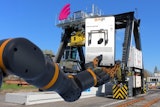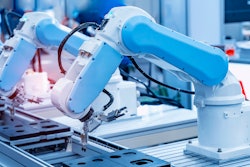When the term “Internet of Things” (IoT) started gaining greater awareness, at first glance it seemed like nothing new to food and beverage (F&B) manufacturers. F&B companies have been monitoring, measuring and responding to manufacturing metrics throughout the plant as the core of quality control for decades. Granted it has transformed from things like stand-alone circular chart recorders and low temperature alarms, to centralized control centers that monitor and manage a complex food plant from procurement to processing to packing and ultimately even storage and shipping. But IoT can not only deliver more efficient quality control for F&B companies, it has the potential to transform a business.
As food companies reassess their readiness for meeting regulations such as the Food Safety Modernization Act (FSMA), one important aspect is collaboration with their vendors, partners and customers. Companies need to be able to demonstrate solid preventative procedures that manage incoming metrics as well as metrics throughout the supply chain. Traceability is more than knowing where a product came from and where it went, but also the parameters by which it was transported and stored.
Therefore, while the Internet of Things will undoubtedly impact many aspects of manufacturing, supply chain management and logistics, it seems to hold some of the greatest potential. Scanners, bar codes, and GPS tracking devices are already being used to monitor the movement of goods in the warehouse and on trucks to customers. A recent survey indicated that 35 percent of manufacturers currently collect and use data generated by smart devices to enhance manufacturing/operating processes, and an additional 17 percent plan to do so in the next three years.
IoT can also provide the insight needed to drive greater efficiency within the tight margins that many food companies operate in. Having better visibility of quantity and quality of incoming, short shelf life ingredients and balancing this with real-time visibility of demand and historical data provides the foundation for greater advanced planning and scheduling if you also have the forecasting tools that can quickly analyze all these data points. Minimizing downtime and improving the fulfillment accuracy of orders can have a profound impact on a company’s bottom line.
The power of IoT to help in improving profitability goes beyond production planning and scheduling. It can include a maintenance technician who’s checking the inventory of a spare part while repairing a critical piece of equipment, to a warehouse manager using a tablet to confirm the location of forklifts and personnel.
This continued adoption of mobility is changing some of the core requirements of IoT. Manufacturing leaders can’t be tethered to their offices, desks and PCs. They walk the plant floor. They make decisions onsite, in the heart of the operation. They need 24/7 access to critical data and systems from remote locations.
While the technology has improved and the cost has decreased to collect data in a manufacturing plant and beyond, the data is often underutilized. The value of IoT can only be achieved by eliminating silos and getting disparate systems to communicate. After all, data is meaningless if it is stored in silos and if it lacks the full dimension of context. With real-time access available to easily monitor the details of the complete manufacturing operation — within the four walls and beyond — a company can begin to see real value. Interoperability is the key word here, though, it is more than simple integration. Data must be able to be consumed in context and used for event triggers and actions.
Insights derived from data analysis can also help F&B manufacturers focus on markets, buying trends and customer attributes, as well as details about the product in use in the market and consumer opinions. On the social front, manufacturers need to take advantage of integrated tools to capture conversations and use those to build a knowledge base and document key decisions relating to product design and customer orders.
Today’s food industry continues to demand higher service levels that stress the importance of speed of delivery, product value and a positive customer experience. Consumers are highly vocal, fickle and quick to turn elsewhere if they are disappointed. F&B manufacturers are not exempt from dealing with easily outraged customers who are willing to share their complaints about a product or service with hundreds of thousands of “close friends” on social media. Modern customer relationship management (CRM) solutions, collaborative tools, online portals and product configuration abilities all help to provide customers with a positive experience. Warranty management and after-market service abilities also help to enhance value after the point of sale.
These are just some of the examples of the power of IoT for F&B companies. What is likely evident is how quickly much of this is changing and how the future is a bit unpredictable except for the obvious fact that data and IT will continue to be the driver for competitive differentiation. That need to be able to quickly respond is one of the reasons that more F&B companies are looking to move more of their core IT solutions to the cloud. The flexibility, speed of deployment and improved security are all fundamental requirements to be able to embrace the value of IoT.
The challenge for F&B companies, therefore, lies not in defining one IoT vision but understanding where the biggest upside opportunities are. Every company has a different set of needs and potential improvements, so the requirement is to define a roadmap for how to turn their data into meaningful actions. The goal is not to collect as much data as possible, but in setting a data strategy that can have the greatest positive impact on a company’s future.























